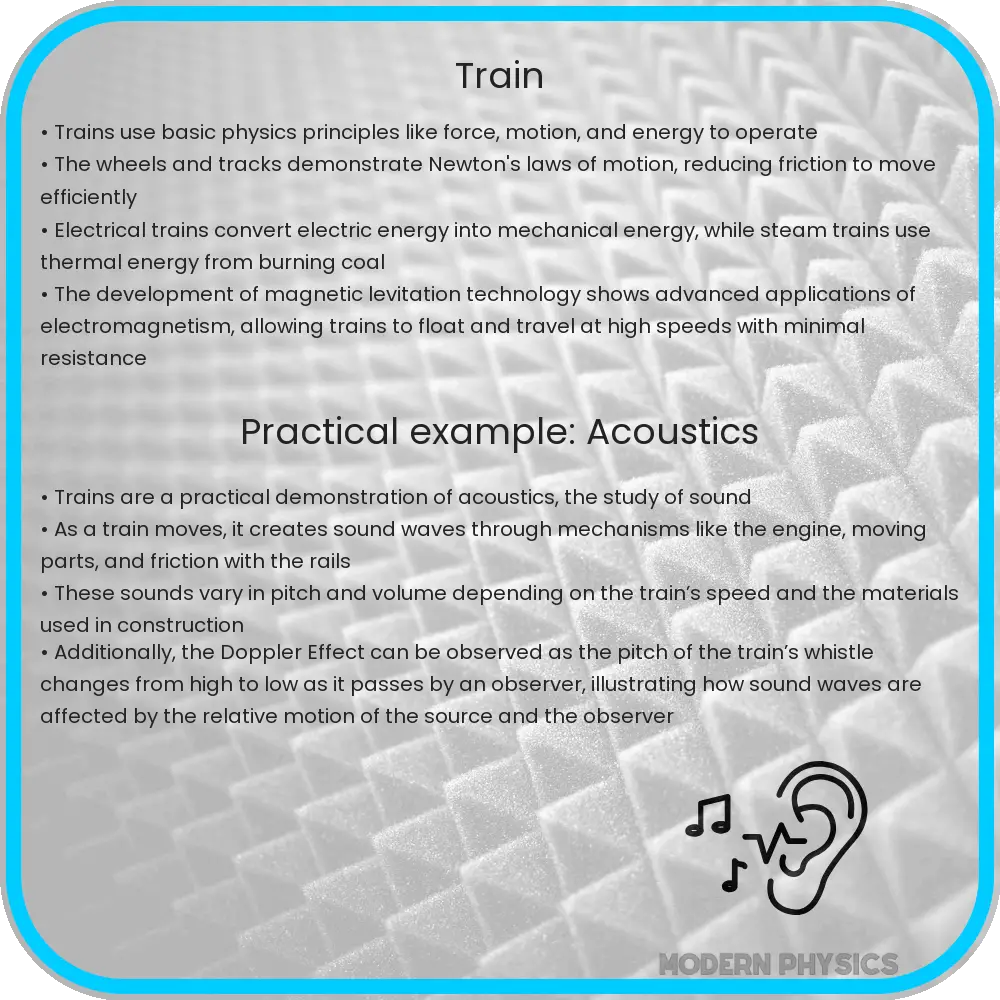Explore the essentials of train kinematics: an insightful guide on speed, acceleration, and dynamics in railway technology for safer, faster travel.

Understanding Train Kinematics: Speed, Acceleration, and Dynamics
Kinematics, the branch of classical mechanics, is pivotal in understanding the motion of trains. It delves into concepts like speed, acceleration, and dynamics without focusing on the causes of these movements. This article aims to elucidate the core aspects of train kinematics, providing a foundational understanding of how trains move and operate.
Speed: The Fundamental Metric
Speed is a scalar quantity that measures how fast an object is moving. In the context of trains, it is typically measured in kilometers per hour (km/h) or miles per hour (mph). The speed of a train is governed by various factors including engine power, track conditions, and train design. Understanding speed is crucial for scheduling and safety, ensuring trains reach their destinations on time while maintaining safe operating conditions.
Acceleration: From Start to Speed
Acceleration, a vector quantity, measures the rate of change of velocity per unit of time. For trains, acceleration is a critical factor during the start and stopping phases. It is influenced by the train’s mass, the gradient of the track, and the traction of the engine. The formula for acceleration (a) is given by:
- \( a = \frac{\Delta v}{\Delta t} \)
where
Δ
�
Δv is the change in velocity and
Δ
�
Δt is the change in time.
Dynamics of Train Motion
Train dynamics involve the forces that cause motion and changes in motion. Newton’s second law of motion, which states that the force (F) acting on an object is equal to the mass (m) of that object multiplied by its acceleration (a), is fundamental in understanding train dynamics. The equation is represented as:
- \( F = ma \)
This principle helps in calculating the required force to move a train, considering its massive weight. Factors like friction, air resistance, and gravitational force on inclined tracks play significant roles in train dynamics.
Understanding these kinematic concepts is vital for the efficient and safe operation of trains. It allows for the optimization of speed, control of acceleration, and effective management of the forces involved in train movement. In the following sections, we will delve deeper into each of these aspects, exploring their practical applications in railway technology.
Practical Applications in Railway Technology
The principles of kinematics are integral to various aspects of railway technology. One significant application is in the design and operation of high-speed trains. These trains require careful calculation of speeds and accelerations to ensure safety, especially around curves. Engineers use kinematic equations to determine the maximum speed a train can travel without derailing. Additionally, understanding train dynamics aids in designing braking systems that efficiently bring trains to a halt, considering their large mass and momentum.
Challenges in Train Kinematics
Despite advancements in technology, challenges remain in optimizing train kinematics. One major challenge is balancing high speeds with safety constraints. High speeds increase the risk of accidents, necessitating advanced safety systems and track designs. Furthermore, environmental factors like wind resistance and friction significantly affect train motion, requiring more sophisticated models to accurately predict train behavior under varying conditions.
Future of Train Kinematics
The future of train kinematics looks promising with the advent of new technologies. Magnetic levitation (Maglev) trains, for example, offer a glimpse into the future of railway transport. These trains levitate above the tracks using magnetic forces, drastically reducing friction and allowing for much higher speeds. Additionally, advancements in AI and machine learning are expected to enhance the safety and efficiency of train operations by optimizing speed and acceleration patterns based on real-time data.
Conclusion
Train kinematics, encompassing speed, acceleration, and dynamics, is a critical area of study in railway technology. Understanding these concepts is essential for the safe and efficient operation of trains. The challenges in balancing speed, safety, and environmental factors continue to drive innovations in this field. With advancements like Maglev trains and AI-driven control systems, the future of train kinematics holds exciting possibilities for transforming railway transportation into a faster, safer, and more efficient mode of travel. As we continue to push the boundaries of what is possible in train technology, the principles of kinematics will remain a cornerstone in our journey towards a more advanced railway system.
